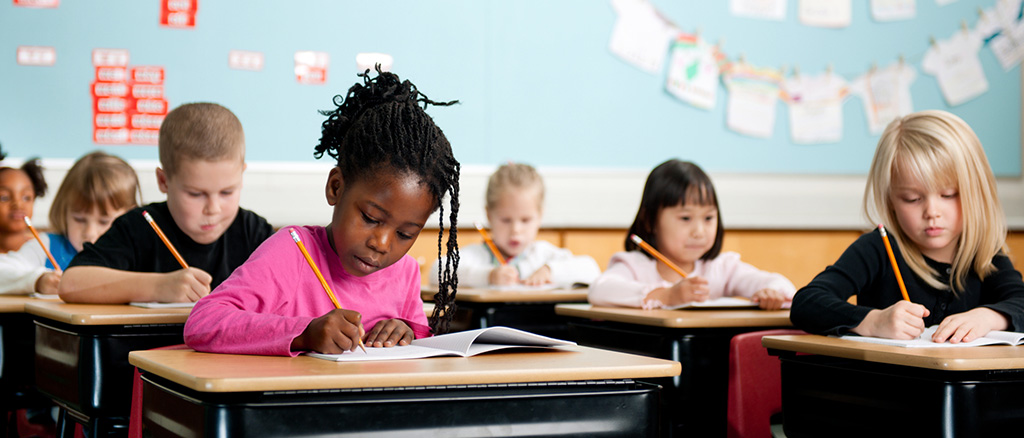K-12 Schools
A hands-off way to reduce the spread of COVID-19 in schools

Check out our free Buyer’s Guide and learn how low or fluctuating humidity can negatively affect K-12 schools.
While wearing masks, hand washing, social distancing, and disinfecting are effective ways to reduce the spread of COVID-19, each of these measures takes a concerted focus on the part of the building occupants. As we navigate the COVID-19 pandemic, it’s smart to look for hands-off approaches to mitigate the transmission of viruses. The addition of humidification to keep the indoor relative humidity within a healthy range is not only safe but also easy and efficient because it requires no extra thought or effort.
The costs are important to consider, too. Consumable items like hand sanitizer, soap, masks, and disinfectants all cost money and will be used up. In contrast, a commercial humidification system can last for over 20 years while providing broad protection for building occupants against viruses like COVID-19, Influenza A, Severe Acute Respiratory Syndrome (SARS), Middle East Respiratory Syndrome (MERS), and others (estimated costs to reopen schools).
The indoor relative humidity (RH) level, or the amount of water vapor in the air, should be kept between 40 and 60% RH to reduce the transmission of COVID-19 and other viruses. The RH level in a school building can vary greatly depending on climate, forced-air heating, mechanical cooling, and many other factors. An inexpensive hygrometer can test and monitor RH levels in a classroom.
Researchers at the Mayo Clinic in Rochester, Minnesota, investigated how indoor humidity levels affect transmission of respiratory viruses in a classroom setting in a recent study. This study showed that rooms with commercial-sized humidifiers had:
- A significant decrease in the percent of total air samples containing influenza A.
- A trend toward a decreased percentage of surface samples containing influenza A.
- Samples with influenza A contained fewer “live” viruses and were, therefore, less infectious.
- Fewer flu-like illnesses were reported.
Besides posing a danger to health and wellness, viral outbreaks are detrimental in other ways. Student absences increase during the dry winter months, often due to respiratory illnesses. Chronic absenteeism, or missing ≥ 10% of school days within a year for any reason, predicts low student achievement, according to another study.
When viruses spread among students, parents and teachers also tend to get ill and must take sick days. Having to rely on substitute teachers too often can negatively affect lesson plans and is expensive. School budgets suffer when students don’t attend. In many states, school budgets are based on the average daily attendance at a school. If many students are absent, the school has less money to pay for essential classroom needs.
It is essential to use the right equipment to add humidity to the air of a classroom. Commercial-grade humidification equipment provides the control needed to ensure proper RH levels – not too low or too high. Simple access to power, water, and drain is all you need to get a system operational – think of any place with a sink nearby.
Free Webinar
Learn how to protect students, teachers, and staff by making one simple, hands-off change.
Related Resources
Next steps
Contact your local DriSteem representative to learn more about humidity control for K-12 schools. Use the Find a Rep tool below to find your nearest representative.
Connect with a humidity control expert
Already using humidity control to protect K-12 Schools?
For best performance and highest efficiency, existing humidification systems should be checked to determine if any replacement parts are needed, if any other maintenance needs to be performed, and whether there is a software update available. Contact your local DriSteem representative to learn more.
